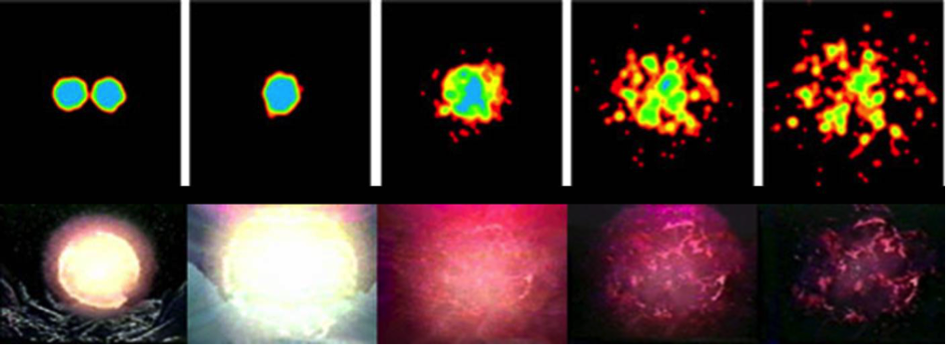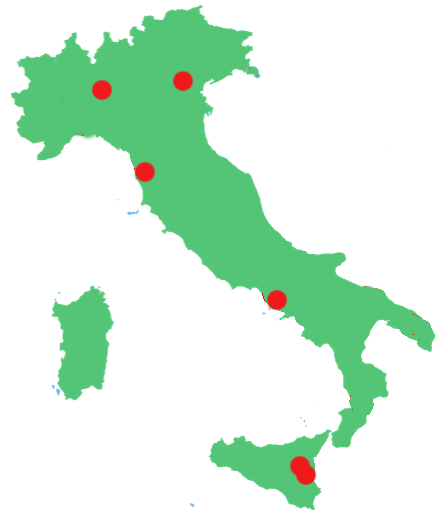Abstract
The project started in 2014 and involves the main Italian theoretical groups working in the field of nuclear structure and reactions with hadronic probes. These groups use different models and methods, thus the coordinated combination of their different expertises is very valuable in addressing the new challenges arising in nuclear physics. All the participants are directly involved in the study of exotic nuclei with the aim of providing theoretical support for the proposal of "key experiments" to be performed at the new Radioactive Ion Beam Facilities (RIBF) around the world and, in particular, of contributing to the development of the Italian project SPES at LNL.
The present project focusses essentially on two subjects:
The first subject concerns the study of the influence of many-body correlations on the nuclear spectroscopic properties, with emphasis on both single particle and collective excitations. In this context, a special attention is devoted to the effective interaction acting in the nuclear medium and the understanding of its microscopic origin.
This is done within different approaches: shell model, density functional theory, algebraic and multiphonon approaches, employing both microscopic interactions, based on modern nucleon-nucleon potentials, and phenomenological effective interactions. The use of the former interactions provides a link between nuclear structure and the underlying nuclear forces while the phenomenological ones give useful information on the role of the various interaction channels. Within these approaches the properties of nuclei are investigated focusing, for instance, on shell structure, collective excitations, shape evolution. The specific studies will be discussed in the section dedicated to the activity of the various Units.
The second subject concerns the dynamics of nuclear excitations and the reaction mechanisms, aiming at reaching a coherent description of both structure and reaction features.
Various models, which incorporate the spectroscopic properties of the systems under study, are employed to investigate transfer and breakup reactions, dominated by peripheral mechanisms, as well as the interplay between peripheral and fusion processes in reactions with weakly-bound systems. The problem of a consistent description of the elastic scattering and associated optical potential calculation
is also being attacked. Extended mean-field theories, based on effective interactions, will be used to describe dissipative heavy ion reactions, which offer the opportunity to study nuclear matter in various regimes.
This project has relevant implications in the astrophysical context, such as for instance the study of neutron stars and the synthesis of elements, providing crucial inputs to model the rapid neutron and proton capture processes.
 |
| Artistic view of the table of isotopes |
The present project focusses essentially on two subjects:
The first subject concerns the study of the influence of many-body correlations on the nuclear spectroscopic properties, with emphasis on both single particle and collective excitations. In this context, a special attention is devoted to the effective interaction acting in the nuclear medium and the understanding of its microscopic origin.
| The nuclear matter phase diagram. Low-energy heavy ion reactions offer the possibility to explore the low density - low temperature region. Exotic beams allow one to move on the (nn - np) axis, making it possible to investigate the behavior of asymmetric nuclear matter. |
This is done within different approaches: shell model, density functional theory, algebraic and multiphonon approaches, employing both microscopic interactions, based on modern nucleon-nucleon potentials, and phenomenological effective interactions. The use of the former interactions provides a link between nuclear structure and the underlying nuclear forces while the phenomenological ones give useful information on the role of the various interaction channels. Within these approaches the properties of nuclei are investigated focusing, for instance, on shell structure, collective excitations, shape evolution. The specific studies will be discussed in the section dedicated to the activity of the various Units.
The second subject concerns the dynamics of nuclear excitations and the reaction mechanisms, aiming at reaching a coherent description of both structure and reaction features.
Various models, which incorporate the spectroscopic properties of the systems under study, are employed to investigate transfer and breakup reactions, dominated by peripheral mechanisms, as well as the interplay between peripheral and fusion processes in reactions with weakly-bound systems. The problem of a consistent description of the elastic scattering and associated optical potential calculation
 |
| Top panel: A simulation of the fragmentation process occurring in heavy ion collisions at Fermi energies. Bottom panel: A sequence of pictures representing a supernova explosion. Both processes are strongly influenced by the properties of the nuclear matter Equation of State. |
is also being attacked. Extended mean-field theories, based on effective interactions, will be used to describe dissipative heavy ion reactions, which offer the opportunity to study nuclear matter in various regimes.
This project has relevant implications in the astrophysical context, such as for instance the study of neutron stars and the synthesis of elements, providing crucial inputs to model the rapid neutron and proton capture processes.



